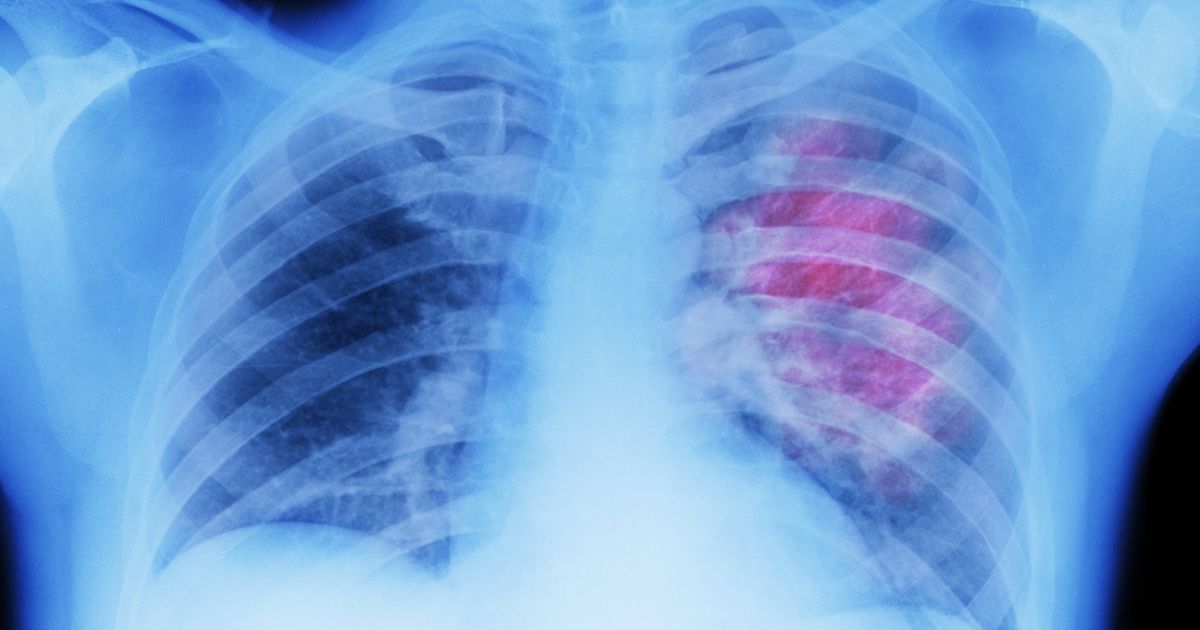Health Dangers And Risks Associated With Turpentine
Turpentine is a toxic substance that can cause great harm to an individual's health, particularly when it comes to their lungs. This is because breathing in the fumes from turpentine or products containing the substance, can cause direct damage, both short-term and lasting, to the lungs. Turpentine, unfortunately, is a common additive in different resins, ink, paints, and similar products. It is also commonly used as a paint thinner and to remove paint. Thus, it is vital to read ingredient lists carefully to avoid products containing turpentine as much as possible. Turpentine exposure, particularly of the prolonged variety, poses a significant danger to health. Learn about the major health dangers and risks of turpentine now.
Pulmonary Edema

Turpentine can cause pulmonary edema, a dangerous health condition that will cause individuals to suffer from excessive fluid in the lungs. Heart problems often cause this fluid, but it’s also been associated with exposure to toxins such as turpentine. It can occur over some time, or it can come on suddenly. This is the most dangerous type of edema, as it can be fatal. If it comes on suddenly and without warning, it’s imperative for patients to seek medical attention right away. It’s best to stay away from anything containing turpentine or its oil to best prevent this health issue. If it does occur, patients will notice they suddenly have difficulty breathing. Their breath will be short and fast, and get worse when they’re lying down or being active. Patients will begin wheezing and coughing, skin becomes cold, and lips might become blue.
Learn more about the effects of turpentine on health now.
Throbbing Headaches

The body reacts quickly when exposed to turpentine. If individuals use too much on a small area of their skin or inhale it, they might experience throbbing headaches. These headaches have the potential to turn from serious headaches to debilitating migraines. There is no set timeframe for how long the headaches will last either. Patients might experience the pain for hours, days, or even off and on for weeks at a time depending on their exposure level. Individuals who use turpentine and develop a headache should call a doctor right away. There’s no harm in taking an over-the-counter medication to try and make the throbbing pain subside for some relief, but patients must still speak to a doctor. In addition to a throbbing headache, patients may also feel dizzy, confused, and have a quickened pulse. They may also feel nauseous. These are all dangerous symptoms of exposure individuals must have checked out right away.
Keep reading for more information on the health dangers associated with turpentine.
Coughing And Wheezing

One of the worst feelings associated with turpentine exposure is the coughing and wheezing that go along with it. If individuals notice they cannot stop either coughing or wheezing when they try to breathe, they should call a doctor immediately. Symptoms often get worse when patients lie down or become active. If patients cannot get their breathing under control, it can become even worse. The inability to breathe properly can cause health problems most individuals don’t want to consider. Coughing and wheezing are often one of the first warning signs an individual has inhaled too much turpentine and fluid has begun to accumulate in their lungs. Thus, immediate medical attention is crucial.
Get the details on more of the dangers turpentine poses in regards to health now.
Chronic Bronchitis

Chronic bronchitis, one type of chronic obstructive pulmonary disease, is not a health problem anyone wants to deal with. This is a problem individuals might face if they are exposed to turpentine, particularly over time. In this condition, the bronchial tubes become inflamed, and they then produce too much mucus. The side effects of chronic bronchitis include shortness of breath, coughing, breathing problems, and wheezing. This is not a health condition patients can cure, though there are treatment options available to help manage it. Individuals are unless to develop chronic bronchitis if they only use turpentine on occasion, but inhaling it regularly is going to cause much more serious health problems.
Learn more about some of the dangers turpentine poses towards health now.
Increased Risk Of Lung Cancer

One of the most common causes of lung cancer is smoking, which damages the lungs as individuals inhale the toxins in nicotine. However, inhaling turpentine is not much different than smoking. Individuals are still inhaling toxic fumes that now have direct access to their lungs. Each time an individual inhales turpentine, they damage their lungs a little bit more, thus increasing their risk of developing lung cancer. Unfortunately, it is not possible for patients to undo the damage caused by inhaling turpentine, particularly when it is done over time. Thus, it is crucial to practice preventative measures such as wearing a mask when exposure cannot be avoided entirely.
Read more about the health risks linked to turpentine now.
Shortness Of Breath

Inhaling turpentine can lead to shortness of breath, severe coughing, and swelling of the throat. For patients with asthma and other lung issues, turpentine inhalation could result in wheezing. Individuals who notice changes in their breathing after working with or being exposed to turpentine should try to remove themselves from the area immediately. If breathing difficulties worsen or new symptoms appear, patients should seek emergency medical care. Once there, the patient should inform the medical staff they have been exposed to turpentine; if possible, information on the duration of exposure could help doctors in planning treatment. To evaluate shortness of breath, the physician will listen to the patient's lungs to check for abnormal sounds, and the respiratory rate will also be measured. The patient might need to be placed on monitoring equipment, and his or her blood oxygen level will be monitored. To treat shortness of breath caused by turpentine exposure, patients might need to have inhalers or multiple nebulizers. Doctors will regularly assess the patient's breathing at the urgent care or emergency center, and a follow-up appointment might be required.
Keep reading to learn more about the dangers associated with turpentine now.
Convulsions

Convulsions are one of several nervous system effects that may develop with exposure to turpentine. At first, patients could feel dizzy, and they might also feel drowsy or nervous. Some patients become very excited and euphoric after short-term exposure. As the patient is exposed to more turpentine, they could develop more advanced neurological signs, including tremors, walking difficulties, and weakness. These signs could then progress to convulsions, and the patient might lose consciousness. If someone is observed having a seizure, bystanders should call an ambulance, and a pillow should be placed under the individual's head. Furniture or any other objects near the patient should be moved aside, and nothing should be placed in the patient's mouth. If possible, bystanders should note the duration of the seizure. Once the ambulance arrives, bystanders should let the paramedics know the patient has been exposed to turpentine, and they should also inform them of the duration of the patient's seizure, if known. Doctors will give anticonvulsant medications via injection to stop seizures, and the patient may need to have a brain scan and an electroencephalogram to be assessed for epilepsy and other potential causes of convulsions.
Get more information about the health risks linked to turpentine now.
Lung Damage

Longer-term exposure to turpentine is linked to lung damage, and patients often develop a chronic form of bronchitis. Individuals who have worked with turpentine regularly for more than five years are at an increased risk of lung cancer. Patients exposed to turpentine at their workplace need to follow proper safety precautions, including the use of face masks and protective clothing, to reduce the potential for lung damage from this chemical. Individuals who work with turpentine regularly may want to have more frequent checkups with a physician to monitor their lung health. To assess the lungs, doctors will begin by listening to the patient's breathing with a stethoscope. They will check for any wheezing, coughing, or other abnormal sounds. Patients might need to have a chest x-ray, CT scan, pulmonary function tests, and a sputum test as part of an evaluation for chronic bronchitis. Individuals with this condition will often be treated with bronchodilators (inhaled medications that open the airways), and theophylline (an oral medicine that relaxes muscles in the airways) may be needed to relieve shortness of breath. Steroids are sometimes required, and patients are typically offered pulmonary rehabilitation to help improve their breathing overall.
Uncover more health dangers of turpentine now.
Renal System Damage

Individuals exposed to turpentine for prolonged periods could be at risk for renal system damage. Initially, blood may be present in the urine, and this could eventually progress to kidney (renal) failure, a condition in which no urine is produced. Since renal system damage can be very serious and require a kidney transplant, patients who notice any symptoms of potential kidney issues should see their primary care doctor for an evaluation as soon as possible. In addition to blood in the urine, signs of potential kidney issues include foamy urine, muscle cramps, increased urinary urgency, fatigue, and sleeping difficulties. Patients could also notice swelling in the legs and ankles, and persistent puffiness may be present around the eyes. Blood tests can be used to evaluate kidney function, and urine tests, ultrasounds, and CT scans may be beneficial. Depending on the severity of renal system damage, doctors may prescribe diuretics to reduce fluid accumulation, and dietary changes might be necessary. In cases of moderate to severe kidney issues, patients might need to have dialysis, and a kidney transplant could be considered.
Learn more about turpentine health risks now.
Nausea And Vomiting

Nausea and vomiting are typically acute symptoms that develop in response to short-term exposure to turpentine. Patients may have a loss of appetite, and the vomiting might lead to dehydration. Turpentine can also cause individuals to vomit blood. If vomiting occurs for more than twenty-four hours, a physician should be consulted. Patients should also consult a physician if they have even a single instance of blood in their vomit. Along with nausea and vomiting, the patient could notice an increase in their heart rate, and headaches and severe abdominal pain could occur. Doctors can provide medication to ease nausea and vomiting, and intravenous fluids may be given to treat dehydration. Most patients find any nausea or vomiting goes away once they are no longer exposed to turpentine.
